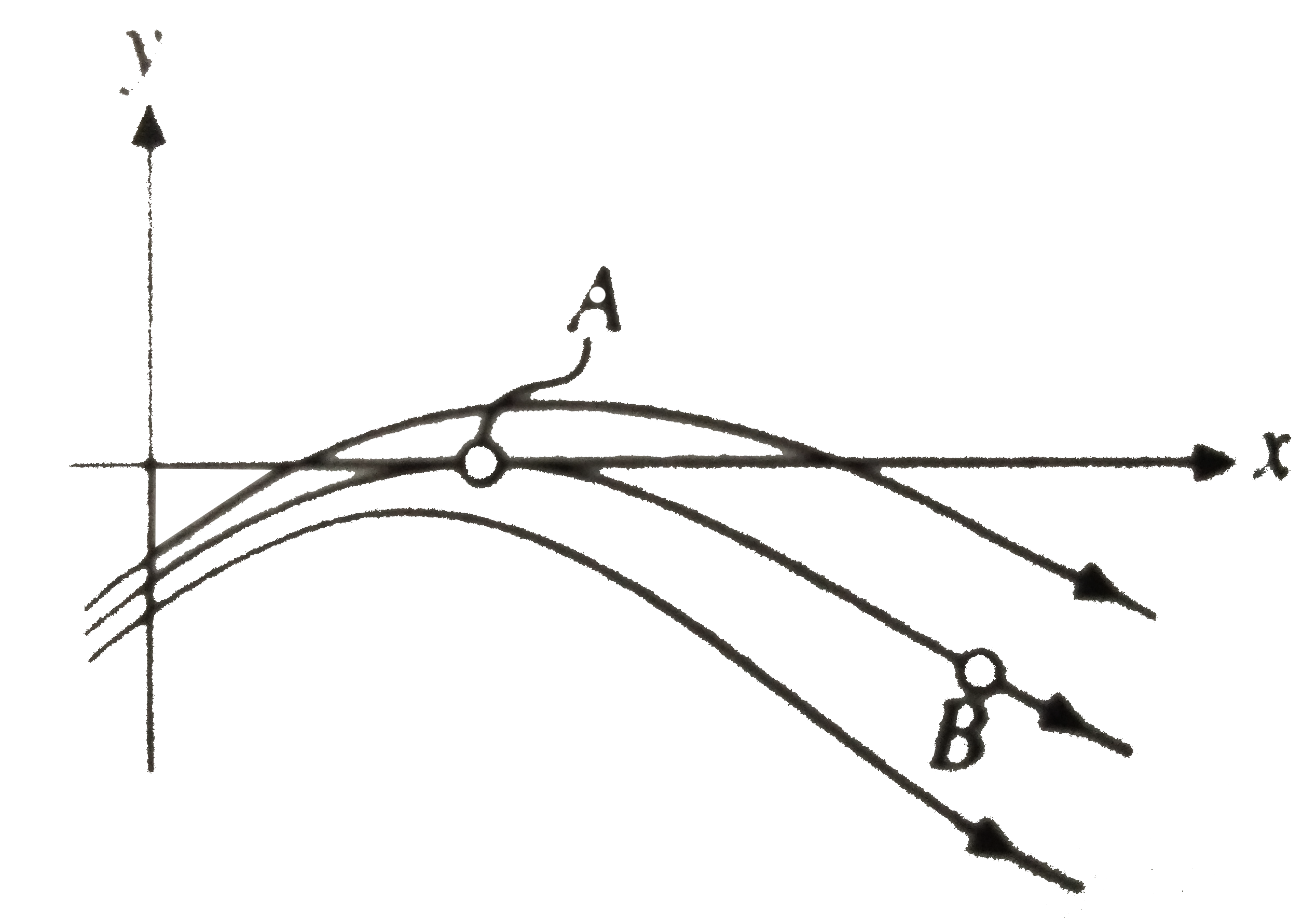(a) Consider an arbitrary electrostatic field configuration. A small test charge is placed at a null point (i.e, where →E=0) of the configuration. Show that the equilibrium of the test charge is necessarily unstable.
(b) Verify this result for the simple configuration of two charges of the same magnitude and sign placed a certain distance apart.
(a) If a charge is in stable equilibrium at a null point, then on displacing it slightly away from this point in any direction the particle will experience restoring force. For electric force to act on the test charge towards the null point, the electric lines in the region nearby the null point must be directed inwards towards this null point. This means that there will be a net flux linked with the surface enclosing the null point. For the net flux, there must be a net charge enclosed within the Gaussian surface, but there is no such charge at the null point. Hence it is not possible. So the particle can never be in the state of stable equilibrium at null point in all directions.
(b) If we consider two positive charges kept at some distance from each other, then at the midpoint of the line joining them the electric field intensity will be zero. But if you displace the test charge along the perpendicular bisector, then the positive charges will further repel the test charge away.
Topper's Solved these Questions
- ELECTRIC CHARGES AND FIELDS BOOK - MODERN PUBLICATIONCHAPTER - ELECTRIC CHARGES AND FIELDS EXERCISE - Ncert File (Ncert (Exemplar Problems) )
25 Videos
- ELECTRIC CHARGES AND FIELDS BOOK - MODERN PUBLICATIONCHAPTER - ELECTRIC CHARGES AND FIELDS EXERCISE - Higher Order Thinking Skills & Advanced Level (Questions With Answers)
5 Videos
- ELECTRIC CHARGES AND FIELDS BOOK - MODERN PUBLICATIONCHAPTER - ELECTRIC CHARGES AND FIELDS EXERCISE - Tough & Tricky Problems
20 Videos
- DUAL NATURE OF RADIATION AND MATTER BOOK - MODERN PUBLICATIONCHAPTER - DUAL NATURE OF RADIATION AND MATTER EXERCISE - CHAPTER PRACTICE TEST
15 Videos
- ELECTROMAGNETIC INDUCTIONBOOK - MODERN PUBLICATIONCHAPTER - ELECTROMAGNETIC INDUCTIONEXERCISE - CHAPTER PRACTICE TEST FOR BOARD EXAMINATION
14 Videos
Similar Questions
(a) Consider an arbitary electrostatic field configuration. A small test charge is placed at a null point (i.e, where →E=0) of the configuration. Show that the equillibrium of the test charge is necessarlly unsutable.
(b) Verify this result for the simple configuration of two charges of the same magnitude and sign placed a certain distance apart.
View SolutionConsider an arbitrary electrostatic field configuration. A small test total is placed at a null point (i.e, where →E=0 ) of the configuration. Show that the equilibrium of the test charge is necessarily unstable.
(b) Verify this result for the simple configuration of two charges of the same magnitude and sign placed a certain distance apart.
View Solution
Knowledge Check
Two positive point charges of unequal magnitude are placed at a certain distance apart. A small positive test charge is placed at null point, then
AThe test charge is in unstable equilibriumBThe test charge is in stable equilibriumCThe test charge is in neutral equilibriumDThe test charge is not in equilibriumA positive charge q0 placed at a point P near a charged of metal sphere experience a force of repulsion of magnitude F, the electric field E of the charge metal, charge at P is
AFq0B<Fq0C>Fq0DFTwo charges e and 3e are placed at a distance r. The distance of the point where the electric field intensity will be zero is
Ar(1+√3) from 3e chargeBr(1+√3) from e chargeCr(1−√3) from 3e chargeDr1+√13 from e charge
A small test charge is released at rest at a point in an electrostatic field configuration. Will it travel along the field line passing through that point ?
View SolutionFig. shows three electric field lines.
(a) What is the direction of the electrostatic force on a positive test charge placed at points A and B ?
(b) At which point A or B, will the acceleration of the test charge be greater if the charge is released?
 .
.
View SolutionTwo charges of 9 and 16 μC are placed 0.7 m apart. Find the position of the null point (A point where the net field is zero) on the line joining the two charges.
View SolutionThe electric field due to point charged at a distance R form it is E. if the same charge is placed on a metallic sphere of Radius R, the electric field on the surface of the sphere will be
View SolutionTwo charge 9e and 3e are placed at a distance r. The distance of the point where the electric field intensity will be zero is :
View Solution
